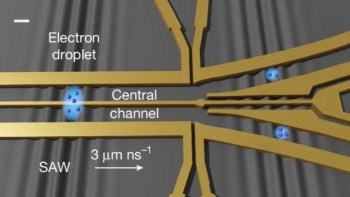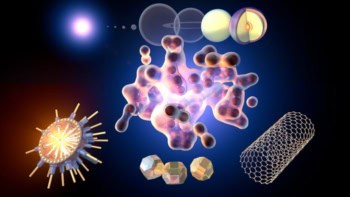Physicists in Uruguay and Brazil have succeeded in synthesising large quantities of magnetic graphite for the first time. The material made by Álvaro Mombrú and colleagues at the Universidad de la República in Montevideo and the Universidad Federal de São Carlos has the advantage of remaining magnetic at room temperature (H Pardo et al. 2004 arxiv.org/abs/cond-mat/0407303). Magnetic carbon could be used to make inexpensive, metal-free magnets for applications in medicine and biology, nanotechnology and telecommunications.
Graphite and other forms of carbon can have ferromagnetic properties. However, the effects are weak, and usually only seen at very low temperatures, so physicists are not sure if the magnetism is due to tiny amounts of iron-rich impurities, or if it is an intrinsic property of the carbon.
Recently it was predicted that it should be possible to induce magnetism in carbon by introducing defects, such as pores and stacking structures, into the honeycomb structure of graphite. To produce such material, the team mixed a sample of highly pure powdered graphite with powdered copper oxide and then heated the mixture at 1200°C for 24 hours in a tube furnace containing either nitrogen or argon.
Mombrú and co-workers characterised their graphite samples using scanning electron microscopy, together with magnetic force microscopy and magnetometry, at different temperatures. They found that pores, and other complex microstructural defects, were distributed non-uniformly throughout the sample. Furthermore, they calculated that the magnetization of the graphite was just 500 times weaker than iron at 4.2 kelvin, and 800 times weaker at room temperature.
Mombrú believes that magnetic impurities are not responsible for the magnetization because iron concentrations of nearly 2000 parts per million (ppm) would be required to produce the values observed, yet they only measured around 60 ppm of iron.
“In addition to being of fundamental interest, our work will be important for technological applications in engineering, nanotechnology, sensors and detectors, and telecommunications,” says Mombrú. “It will also have uses in medicine and biology as a unique biocompatible magnetic material.”



